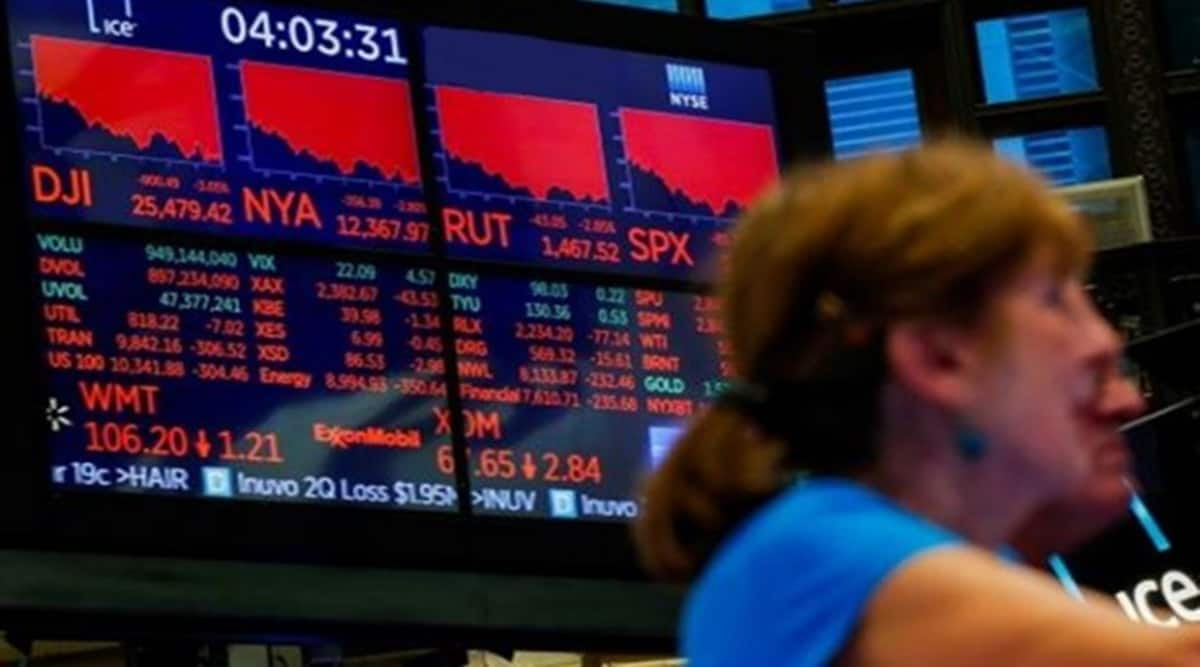Global Markets: Wall Street keeps stocks down, dollar up on inflation
Wall Street and global stocks fell again on Friday, or barely recovered, with government bond yields pulling back from recent peaks and the dollar pushing ever higher, as higher-than-expected inflation continued to weigh on markets.
Fresh personal consumption expenditures (PCE) price index data, tracked by the US Federal Reserve as it considers more interest rate hikes, showed a rise of 0.3% last month after dipping 0.1% in July. Euro zone inflation also hit a record high of 10% in September, surpassing forecasts for a 9.7% rise, flash inflation data showed.
Also read: Infosys may announce share buyback in Q2 earnings
The Dow Jones Industrial Average fell 0.65%, to 29,034.83, the S&P 500 lost 0.61%, to 3,618.17 and the Nasdaq Composite dropped 0.53%, to 10,681.01.
The declines Friday cap a week of global market turmoil in which recession fears already sapped stocks and currency markets were rocked by dollar strength.
Asian shares fell earlier on Friday, on track for their largest monthly loss since the start of the pandemic in 2020.
European shares saw some recovery, although they remained on track for a third consecutive quarter of losses as markets worried about the impact on global growth of central banks hiking interest rates to counter inflation. Europe’s STOXX 600 was last up 0.56%.
The MSCI world equity index, which tracks shares in 47 countries, fell 0.1%.
David Madden, market analyst at Equiti Capital, said a pullback in government bond yields enabled stocks to edge up, but this was unlikely to be the start of a longer recovery.
“The big picture hasn’t changed: yields are an upward trend, inflation is still really high, interest rates are set to continue on the path of higher rates,” he said.
Also read: Sensex, Nifty snap 7-day losing streak after RBI hikes repo rate; Nifty eyes 17700 with support at 16850
European government bond yields fell, with Germany’s 10-year yield down 10 basis points at 2.101%, compared to Wednesday’s peak of 2.352%, which was an 11-year high.
US Treasury yields also pulled back on Friday. The yield on 10-year Treasury notes was down 5.7 basis points to 3.690%; 30-year Treasury bonds fell 4.3 basis points to 3.650%.
Currency markets calmed, with the dollar index up 0.2% on the day, after hitting a 20-year high on Wednesday. The dollar index has risen more than 17% this year.
The British pound, which had been driven to all-time lows by a combination of dollar strength and the government’s plans for tax cuts funded by borrowing, fell 0.15% on the day. It is on track for its worst quarter versus the dollar since 2008 .
The Bank of England won’t raise interest rates before its next scheduled policy announcement on Nov. 3 despite a plummet in sterling but will make big moves in November and December, a Reuters poll found.
European Central Bank policymakers have also voiced more support for a large rate hike.
COMMODITIES Oil prices were on track for their first weekly gain in five on Friday, underpinned by the possibility that OPEC+ will agree to cut crude output when it meets on Oct. 5. But in morning trading US crude fell 1.17% to $80.28 per barrel and Brent was at $88.12, down 0.42% on the day.
Gold prices, which gained on Friday as the dollar weakened, were on course for their worst quarter since March last year as central banks worldwide stick with aggressive monetary policies.
Spot gold last rose 0.1% to $1,662.30 an ounce; US gold futures gained 0.54% to $1,667.40 an ounce.
